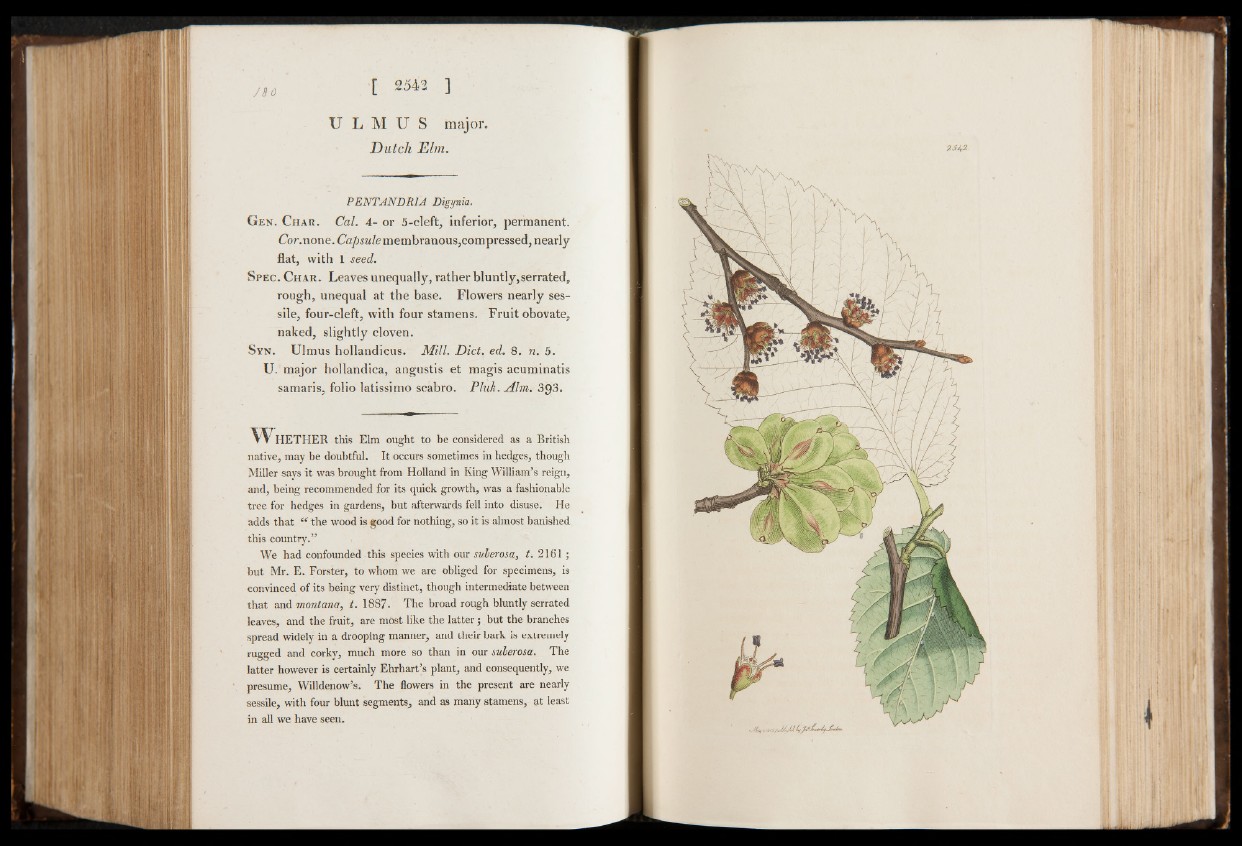
JU t 25« ]
U L M U S major.
Dutch Elm.
PENTANDR1A Digynia.
Gen. Chau. Cal. 4- or 5-cleft, inferior, permanent.
Cbr.none.Capsw7emembranous,compressed,nearly
flat, with 1 seed.
Spec. Char. Leaves unequally, rather bluntly,serrated,
rough, unequal at the base. Flowers nearly sessile,
four-cleft, with four stamens. Fruit obovate,
naked, slightly cloven.
Syn. Ulmus hollandicus. M i ll. D ie t . ed. 8. n. 5.
U. major hollandica, angustis et magis acuminatis
samaris, folio latissimo scabro. P lu h . A im . 3Q3 .
w HETHER this Elm ought to be considered as a British
native, may be doubtful. It occurs sometimes in hedges, though
Miller says it was brought from Holland in King William’s reign,
and, being recommended for its quick growth, was a fashionable
tree for hedges in gardens, but afterwards fell into disuse. He
adds that “ the wood is good for nothing, so it is almost banished
this country.”
We had confounded this species with our sulerosa, t. 2161 ;
but Mr. E. Forster, to whom we are obliged for specimens, is
convinced of its being very distinct, though intermediate between
that and montana, t. 1887. The broad rough bluntly serrated
leaves, and the fruit, are most like the latter; but the branches
spread widely in a drooping manner, and their bark is extremely
rugged and corky, much more so than in our sulerosa. The
latter however is certainly Ehrhart’s plant, and consequently, we
presume, Willdenow’s. The flowers in the present are nearly
sessile, with four blunt segments, and as many stamens, at least
in all we have seen.
2S42.
. . / , ibiS/AU^'